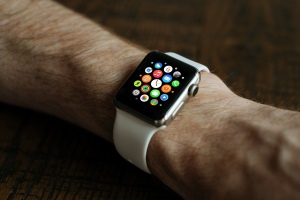From trying to fit in information on skimpy punch cards way back when computers were as big as a room, we now have the terabyte inside devices that could be as slim as your android phone. Or you may not care about devices because you can also have your cloud-based drive. The problem now is we have endless memory space for information to be stored but we seem to lack the information. Isn’t that ironic (cue Alanis Morrisette song here).
Information, also called content, is now comparable to a commodity. Content developers for websites are now in demand. For journalists before, every day is a deadline but now, every hour or every minute is a deadline thanks to technology. When the Internet allowed readily accessible information in real time, more and more people started getting their information from the Internet. Seriously, who would have the time or freedom to watch the evening news everyday or the hourly news flash? Likewise, information from the older mediums, meaning TV, radio and print caters to the general public. Compared to the Internet, users can choose which information they want to consume and it’s even interactive. No wonder TV is following suit, just look at Samsung’s or Sony’s Internet TV.
Indeed, technology and information have partnered and altered people’s lives through time. In a study by Time Inc. and Mindshare Study titled, “Connecting with Today’s Changing Families” conducted in 2012, it was revealed that non-traditional families are heavy media users. The study classified non-traditional families as the families with single parents and same sex parents. They are also the multigenerational families, mixed race families and blended families. These non-traditional families read three magazines and visit 4.8 websites on a regular basis. There are also 19% of them who watch 30+ hours of TV per week.
Here’s more that can be good news for businesses. Non-traditional or modern families not only consume media, they also look to it for product information. They are also more willing to buy brands from companies that support causes they believe in, plan to spend more in the next 12 months and plans to buy a lease vehicle in 12 months.
Not only that, at the time of the study, they have spent as much as $2,570 on recent tech purchases. I believe the tech purchases are to access more information in more convenient ways. You may now be asking just how much of the population are non -traditional families. Well, according to the study, they compose 60% of the population in 1970. That increased to 80% in 2010.
I think these facts justifies why businesses should be more accessible through non-traditional media or technology to keep up. Online presence is a must. Free platforms like Facebook, Twitter and Foursquare are advertising and marketing opportunities for businesses on a tight budget. VoIP services from providers like RingCentral can help businesses be within reach of their customers anytime and anywhere.
Businesses should also bank on content or information but it has to be the truth as well. Organized information is transparent information and partnered with technology, is a boost in corporate image. The study mentioned earlier also showed that as much as 46% of these non-traditional families are turned off by advertising that always depicts the ‘ideal’ family. This implies for service providers and product developers to be more conscious on the social standing of their potential consumers or clients with the information presented on their advertisements.
The Partnership of Information and Technology









